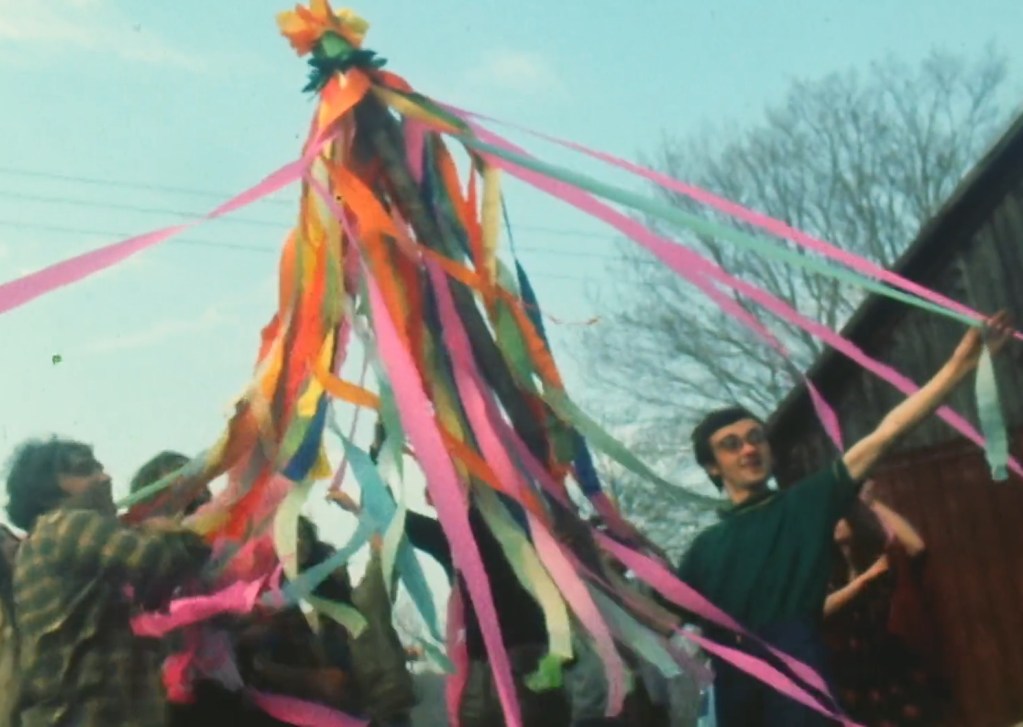Ray Mungo’s origin story reads like the stuff of a movie script: Born in 1946, the Roman Catholic schoolboy morphed into a Marxist Boston University student turned New York underground press founder turned, in 1968, back-to-the-land pioneer at Vermont’s Packer Corners commune in Guilford.
Mungo wrote about his journey in the 1970 book “Famous Long Ago: My Life and Hard Times with Liberation News Service,” which the New York Times deemed an “honest, literate and loving memoir” and actor Robert Redford — fresh off his star turn in 1969’s “Butch Cassidy and the Sundance Kid” — optioned for a film.
Redford asked Mungo to write the screenplay, the press went on to report.
“Big mistake,” Charles Light, a fellow back-to-the-lander and 75-year-old Vermont filmmaker, recently recalled. “Ray’s script had nothing to do with the original story.”
And so Redford’s option lapsed, as did subsequent interest from a succession of prominent producers including, as one newspaper reported, Stephen Schwartz, composer of the musicals “Godspell” and “Wicked.”
Mungo would move to California, where he’s now 78, retired and, according to friends, living quietly out of the public spotlight. Light, for his part, has spent decades making indie documentaries about everything from the plight of Vietnam veterans to the fight against nuclear power to, premiering Sept. 7, what he calls “this long-delayed opus.”
“Far Out: Life On & After the Commune” tells the true story of a group of hippies who bought properties in Guilford and nearby Montague, Massachusetts, only to face challenges while sowing the seeds of surprisingly lasting change.
“Our whole idea of moving to the farm was to get away from the cities, to get away from politics, to get away from the news,” Mungo says at the start of the 85-minute film. “We didn’t have a television set, we didn’t have a telephone, we didn’t have indoor plumbing.”
Instead, they had an array of higher education degrees — and, in Mungo’s case, a spurned fellowship to Harvard. Even so, they didn’t know how to complete such down-to-earth tasks as milking a cow or tilling a field.
“I wasn’t brought up ever to go outside,” commune resident turned poet Verandah Porche says in the film. “There were farmers who reached out to us. They needed cheap labor, and we needed to learn how to do things. And so we toted hay bales and hauled sap buckets and hung around in farm kitchens.”
Many longtime locals still remember the newcomers weeding naked. But the documentary reveals the commune wasn’t always the Garden of Eden. When Mungo revealed his sexuality, “the hippies were not necessarily accepting of this gay thing,” he says in the film. Women recount feeling relegated to the kitchen despite the feminist movement, while their children ricocheted in different directions.
Porche’s daughter, Oona Adams, recalls pretending that a tree stump was a record player — then discovering cartoons on a neighbor’s television.
“It was kind of a complicated place to grow up,” Adams says in the film.
Commune residents would go on to protest the 1970s development of nuclear power locally and nationally. By 1979, a few teamed with such stars as Jackson Browne, Graham Nash and Bonnie Raitt to produce a week of sold-out “No Nukes” concerts at New York’s Madison Square Garden and a culminating 200,000-person rally featuring Jane Fonda, Tom Hayden and Ralph Nader at nearby Battery Park.
“I think it had a very divisive impact,” Harvey Wasserman, a Montague commune resident turned activist and author, says in the film. “There were those of us who had been in New York and those of us who stayed home. And there was a divide. It just was a cultural divide.”
It wasn’t the only fissure. In 1970, the Green Mountain State was home to an estimated 35,800 hippies — one-third of its 107,527 people age 18 to 34, according to the Vermont Historical Society. But that number declined precipitously upon the conclusion of the Vietnam War, with some 75 communes at the beginning of the decade whittled down to only a dozen by its end.
The documentary doesn’t sugarcoat the communes’ divisions and decline.
“I certainly wanted it to have that honesty vibe,” Light said in an interview, “for people to speak directly to the problems and conflicts as much as they felt comfortable, even to the extent of including very contradictory points of view. Because that’s how life is. Obviously, we didn’t have all the answers.”
Residents at Vermont’s Packer Corners commune in Guilford. Photo courtesy Charles Light
And yet, seeds continue to sprout.
Mungo’s memoir and subsequent books remain for sale (on Amazon, no less). Porche, for her part, still lives on the property and serves as vice-chair of the Guilford Selectboard.
“It’s important to me,” Porche says in the film, “that people still do feel that this is a place where you can come and stay for a week or a month and compost experience with us, that conversation is still a crop here.”
Adds her daughter, who’s now a labor organizer: “It’s a sea change really, that the dominant culture is now a culture shaped by the people who moved here in the ’60s.”
That’s one reason Light made the documentary between his meetings as a member of the Guilford Planning Commission. He’s set to screen the film at Brattleboro’s Latchis Theatre Sept. 6-12, with fellow commune residents scheduled to appear at a special premiere event Sept. 7.
“I think a certain amount of ‘boomer’ fatigue is setting in, as our kids always refer to this as ‘The Story That Will Not Die,’” Light said. “But you can’t deny the effect that the back-to-the-land movement had on the social and political culture — and the effect the local people had on us.”
Read the story on VTDigger here: For a new film on Vermont’s 1960s counterculture, it’s been a long strange trip to the screen.

